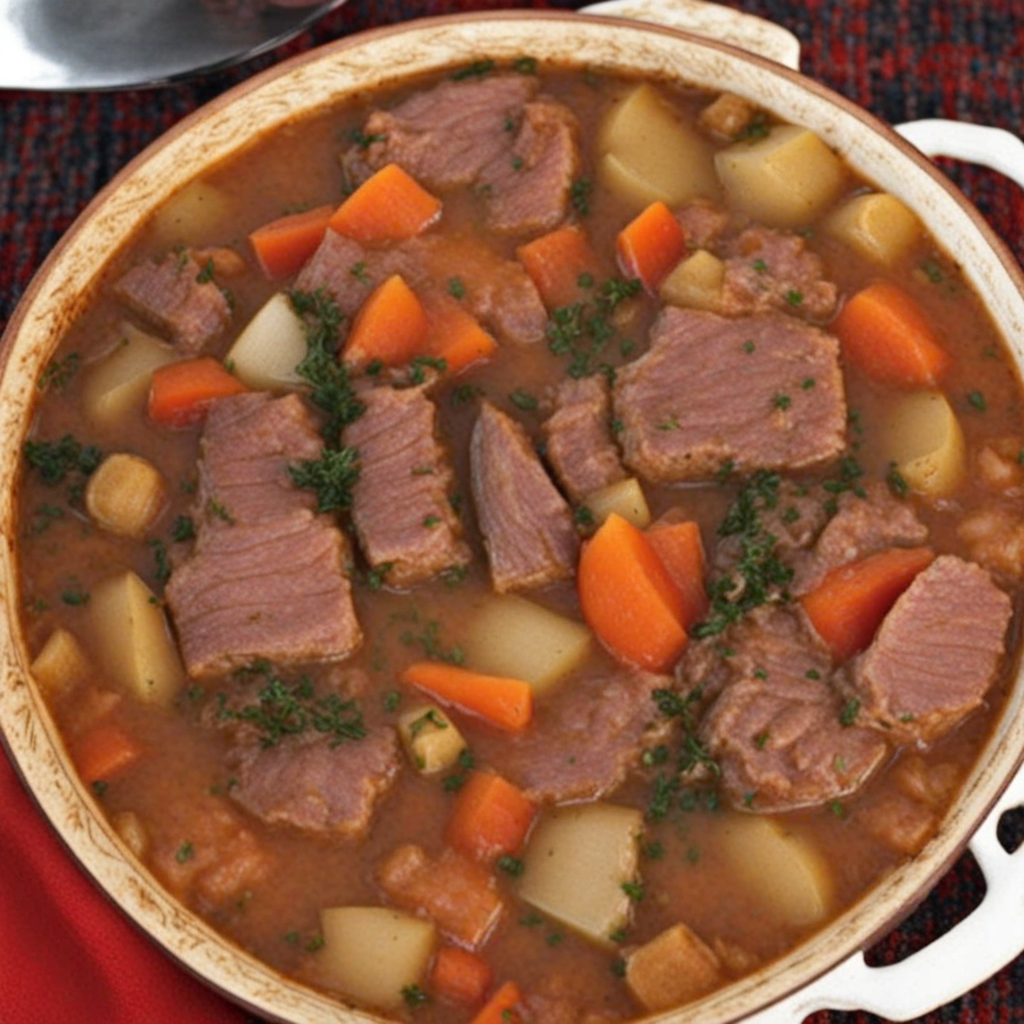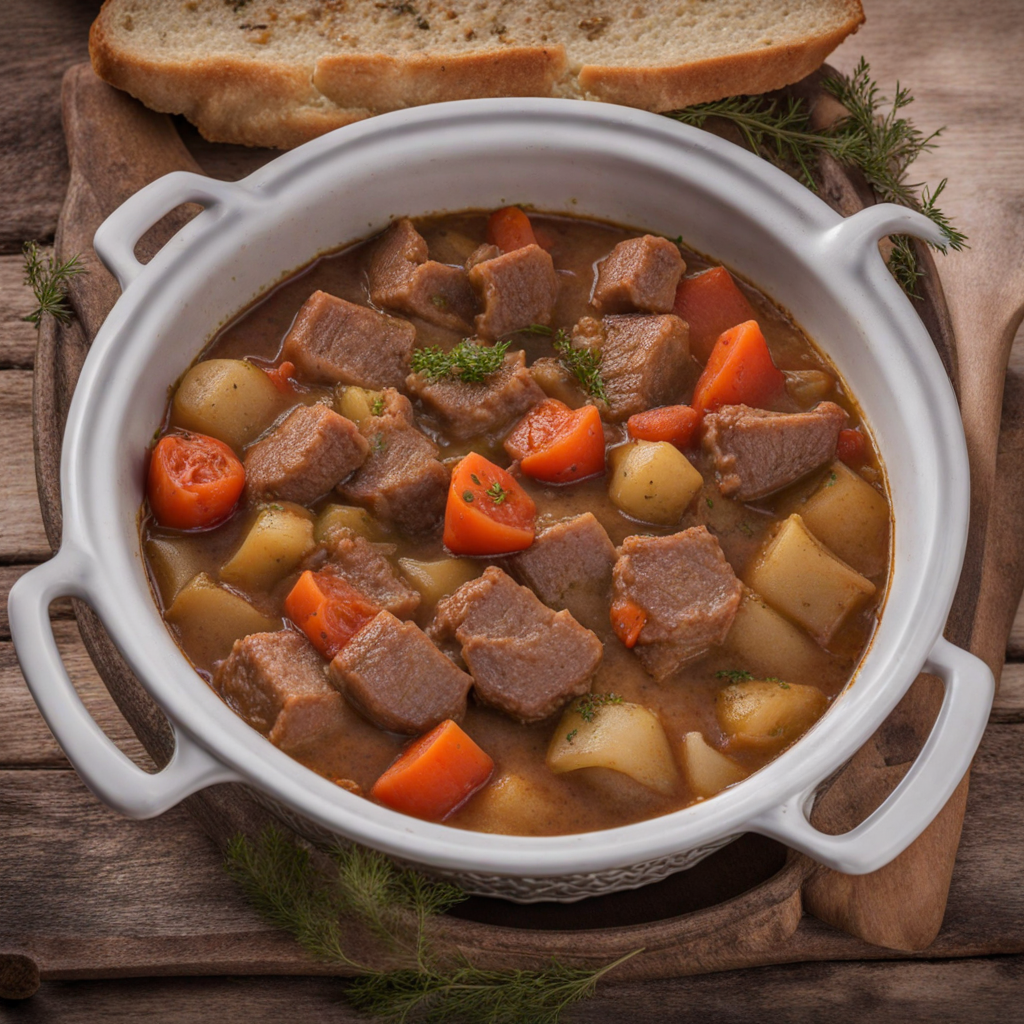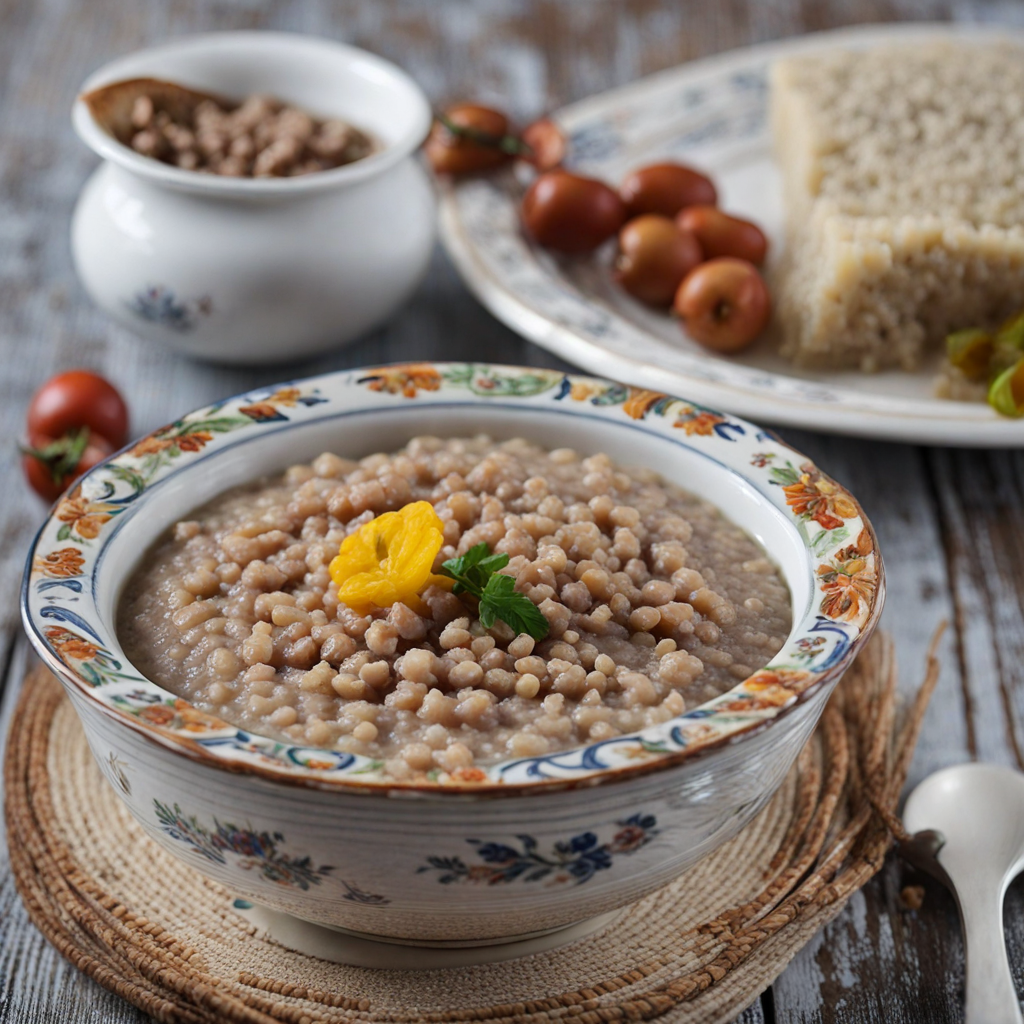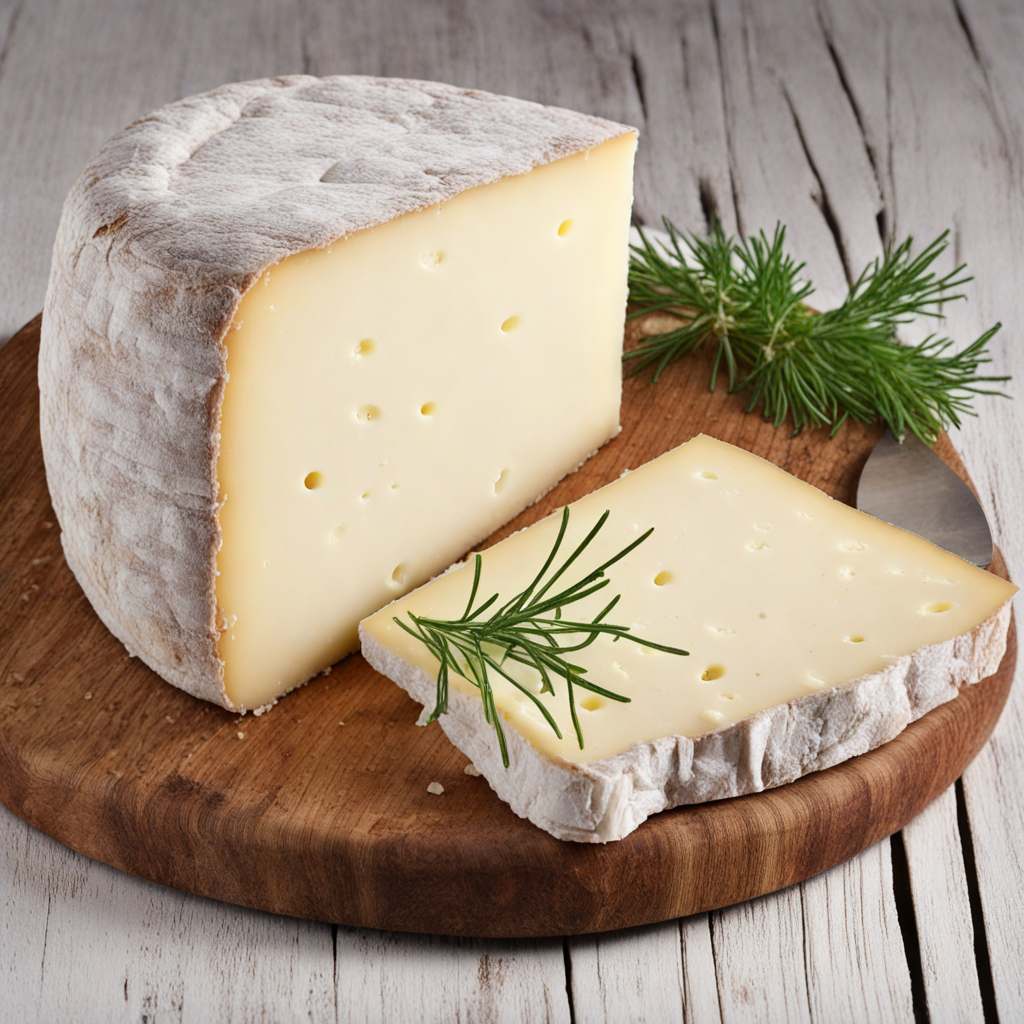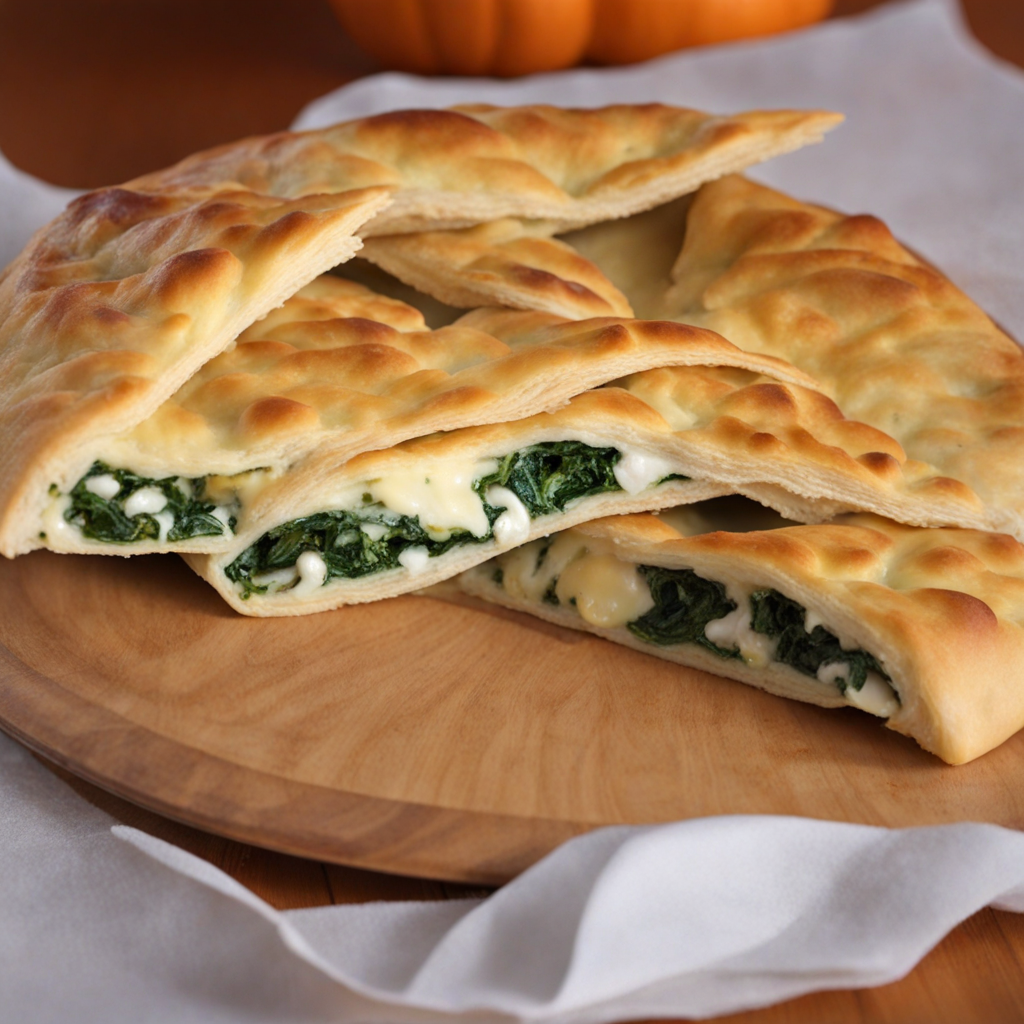Bosanski Lonac
Bosanski Lonac, a traditional dish hailing from Bosnia and Herzegovina, is a hearty stew that embodies the essence of rustic Balkan cuisine. This dish is made by layering various types of meat, typically beef, lamb, or chicken, along with seasonal vegetables such as potatoes, carrots, and onions. The ingredients are combined in a large pot, often a clay vessel, which is then slow-cooked to allow the flavors to meld beautifully. The result is a rich, savory stew that is both comforting and satisfying, making it a perfect meal for gatherings and family occasions. The cooking method for Bosanski Lonac is as important as the ingredients themselves. The dish usually involves a slow-cooking process, often over an open flame or in an oven, which allows the natural juices of the meat and vegetables to infuse one another. Herbs such as bay leaves and black pepper are commonly added to enhance the flavor profile, while the use of local spices gives it a distinct character. The slow cooking not only tenderizes the meat but also creates a thick, flavorful broth that can be enjoyed with crusty bread or served over rice. This dish is not just about taste; it represents the culture and tradition of Bosnia and Herzegovina, where food is often a communal experience. As families gather around the table to share Bosanski Lonac, they are also sharing stories and creating memories. The heartiness of the stew makes it ideal for colder months, while its rich flavors and aromas evoke a sense of warmth and hospitality, making Bosanski Lonac a quintessential dish for anyone looking to explore the culinary delights of this Balkan region.
How It Became This Dish
Bosanski Lonac: A Culinary Treasure of Bosnia and Herzegovina Bosanski Lonac, which translates to "Bosnian Pot," is a hearty stew that embodies the rich culinary heritage of Bosnia and Herzegovina. This dish is not merely a meal; it is a symbol of the region's history, culture, and the communal spirit that has defined Bosnian life for centuries. Through its ingredients and cooking methods, Bosanski Lonac tells a story of rural traditions, seasonal abundance, and the intermingling of various cultural influences. Origins and Historical Context The origins of Bosanski Lonac can be traced back to the Ottoman Empire, which ruled over the Balkan Peninsula from the late 14th century until the late 19th century. During this time, the empire's vast expanse facilitated the exchange of culinary practices and ingredients among different regions and cultures, including the Slavic peoples of the Balkans. As a result, Bosnian cuisine began to incorporate elements from both Turkish and Mediterranean influences, creating a unique gastronomic identity. The dish itself is believed to have been created out of necessity. In rural areas, where resources were often limited, Bosnians learned to prepare meals using locally available ingredients. The method of slow-cooking in a pot allowed for the use of tougher cuts of meat and seasonal vegetables, transforming them into a tender and flavorful stew. Traditionally, Bosanski Lonac was made in a large pot, often shared among families or communities, emphasizing the importance of gathering and sharing food as a social ritual. Ingredients and Preparation At its core, Bosanski Lonac is a one-pot meal consisting of meat (usually beef or lamb), potatoes, carrots, onions, and various seasonal vegetables. The dish is distinguished by its use of spices, which are typically minimal to allow the natural flavors of the ingredients to shine. Common spices include salt, pepper, and occasionally bay leaves or paprika. The preparation of Bosanski Lonac involves layering the ingredients in a pot, starting with the meat at the bottom, followed by the root vegetables and potatoes. This layering method is essential, as it allows the flavors to meld together during the lengthy cooking process, which can last several hours. Traditionally, the pot was placed in a fireplace or a wood-burning oven, allowing for even cooking and the development of deep flavors. With the advent of modern cooking techniques, Bosanski Lonac has also adapted to contemporary kitchens. Today, it can be made on the stovetop or in a slow cooker, but many still prefer the traditional methods that honor the dish's historical roots. Cultural Significance Bosanski Lonac is more than just a dish; it is a cultural artifact that represents the spirit of Bosnian hospitality and the importance of community. In Bosnia and Herzegovina, food is an integral part of social gatherings, family celebrations, and religious events. Sharing a pot of Bosanski Lonac is a way of fostering connection and warmth among family and friends. The dish is often served during significant occasions, such as weddings, holidays, and family reunions. It reflects the communal aspect of Bosnian culture, where meals are not just about sustenance but also about celebration and togetherness. The act of gathering around the table to enjoy a hearty stew is a tradition that reinforces family bonds and cultural continuity. Moreover, Bosanski Lonac plays a role in the preservation of Bosnian identity, especially in the face of globalization and rapid modernization. As younger generations move away from traditional farming and cooking practices, there has been a concerted effort to maintain these culinary traditions. Cooking classes, food festivals, and community events centered around Bosanski Lonac serve as a means of educating younger generations about their heritage. Evolution Over Time Throughout the years, Bosanski Lonac has evolved, reflecting changes in society and cooking practices. In the past, the dish was primarily prepared in rural households, where it was made with whatever ingredients were available. However, as urbanization increased, Bosanski Lonac began to gain popularity in urban settings as well. Today, it can be found in restaurants across Bosnia and Herzegovina and even in international menus, showcasing the dish's versatility and appeal. In recent years, there has been a resurgence of interest in traditional cooking methods, particularly among younger chefs and culinary enthusiasts. This revival has led to a renewed appreciation for Bosanski Lonac as a dish that not only nourishes the body but also serves as a link to cultural heritage. Some chefs have begun experimenting with the recipe, incorporating new ingredients or modern cooking techniques while still honoring the traditional essence of the dish. The use of organic and locally sourced ingredients has also become a trend, aligning with a broader global movement toward sustainability and healthy eating. Many chefs now emphasize the importance of using seasonal produce, reflecting the original spirit of Bosanski Lonac as a dish that celebrates the bounty of the land. Conclusion Bosanski Lonac stands as a testament to the rich culinary heritage of Bosnia and Herzegovina. Rooted in the traditions of the past, this dish has evolved over time while remaining a symbol of community, hospitality, and cultural identity. Whether enjoyed in a rustic home or a modern restaurant, Bosanski Lonac continues to bring people together, nourishing both body and soul. As the world becomes increasingly interconnected, the importance of preserving local food traditions grows ever more significant. Bosanski Lonac not only fills the stomach but also nourishes the spirit, reminding us of the power of food to transcend time and place, fostering connections among generations and communities. In every pot of Bosanski Lonac, there lies a story waiting to be shared, a history steeped in flavor, and a culture rich in warmth and hospitality.
You may like
Discover local flavors from Bosnia And Herzegovina


